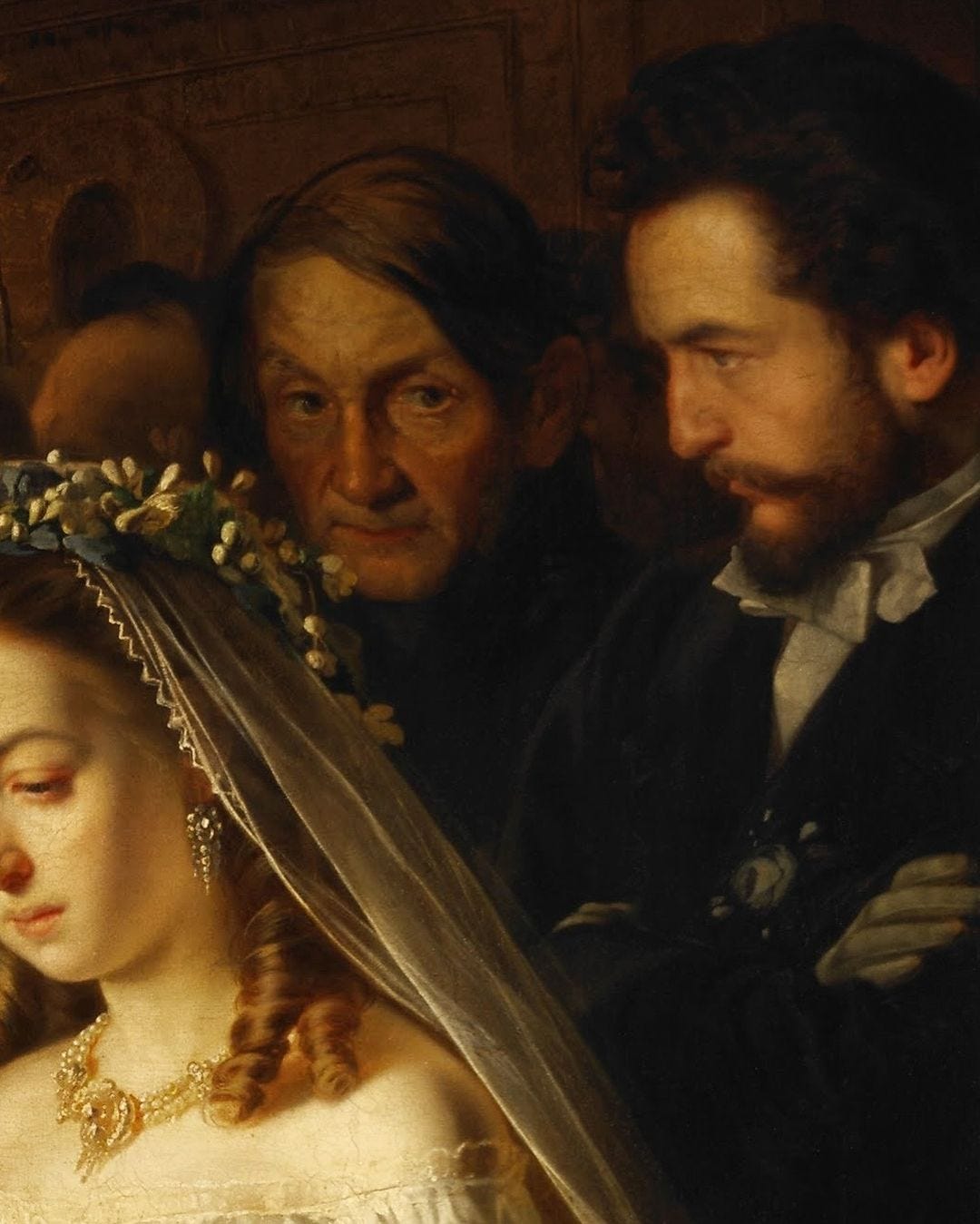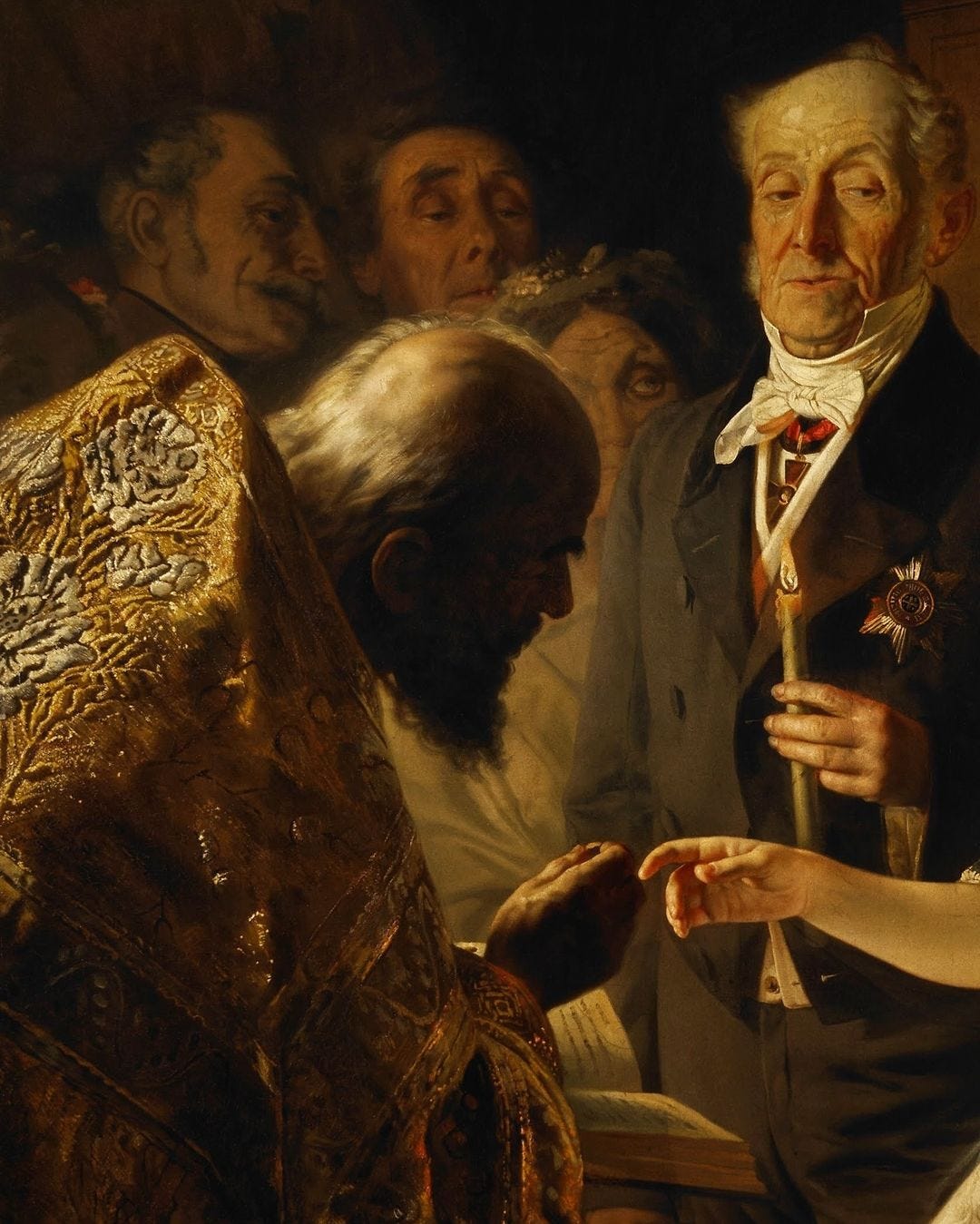VASILI VLADIMIROVICH PUKIREV, THE UNEQUAL MARRIAGE, 1862
The scene resembles a highly theatrical moment in a play; the church's light casts upon the three central characters in the artwork; the bride, highlighting her sorrowful and lovely form, the aged and weary-looking groom, and the bent priest. Around the couple are different attendants and spectators whose reactions vary from apathy to intrigue.
The bride is positioned on the right, wearing a classic white wedding dress and a veil. With a downcast face and a solemn look, she holds a lit candle in her hand. In sharp contrast, the groom, an older serious-looking man, stands on the left, wearing formal clothing with a medal on his chest, holding a matching candle, and gazing at his future bride.
The inspiration for the painting originated from a specific true story; Pukirev’s acquaintance, Sergei Mikhailovich Varentsov, a young merchant, was deeply in love with a twenty-four-year-old woman named Sofya Nikolaevna Rybnikova. However, her parents believed it would be more advantageous for her to wed a wealthier and more accomplished man, a thirty-seven-year-old named Andre Aleksandrovich Karzinkin. Sergei was compelled to attend the wedding and witness his beloved wed another for family reasons; his brother Nikolai had married Karzinkin’s younger sister. Sergei subsequently expressed concerns about Pukirev's painting, prompting the artist to alter the artwork. Pukirev ultimately positioned himself behind the bride.
The artwork is filled with symbolism that enhances its story, in the backdrop of the ceremony, among the spectators, two older women wearing wreaths resembling that of the bride (one behind the groom to the left, and the other on the far left barely visible behind the priest), with one of them depicted in white garment. The woman is barely visible and is adjacent to the priest, a rare arrangement since regular guests aren’t allowed to stand beside the priest during the ceremony. This might imply that these women are not physically present but instead represent the deceased ex-wives of the groom.
"The Unequal Marriage" created a stir when it was initially displayed at the yearly academic exhibition in 1862. Both critics and the public were impressed by its impactful social critique and deep emotional resonance. The artwork's bold depiction of the disparity in arranged marriages struck a chord with audiences, igniting conversations about social conventions and the treatment of young women.





